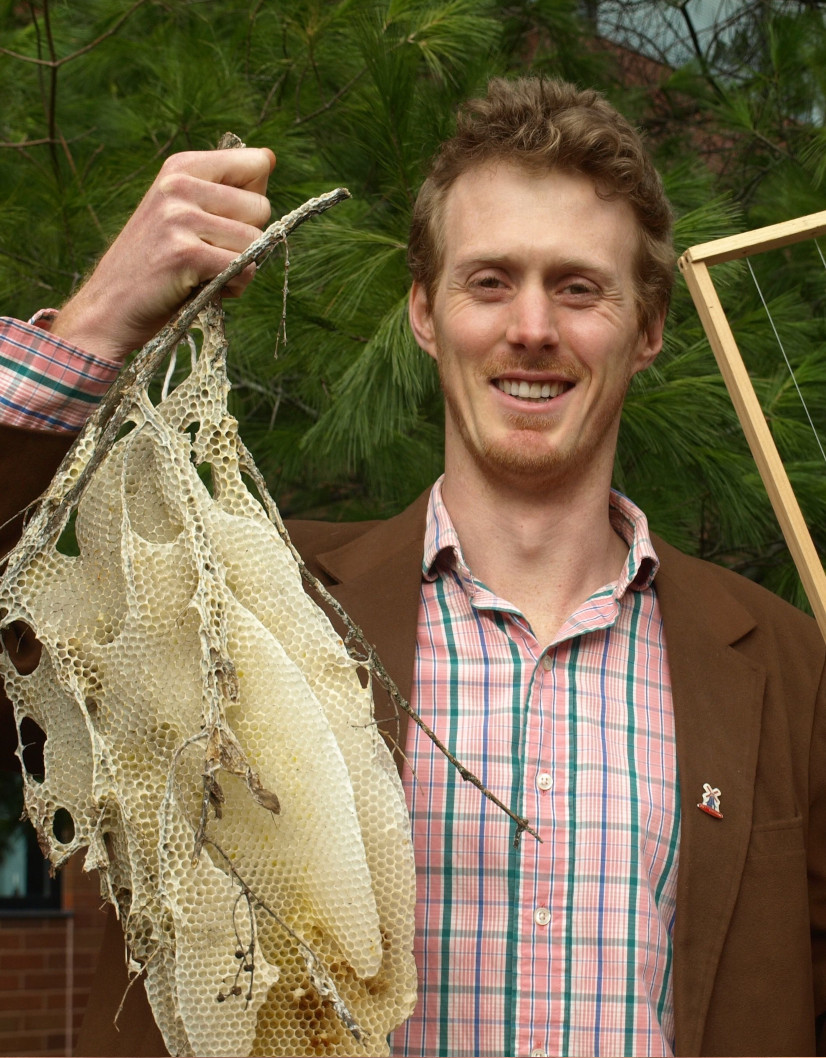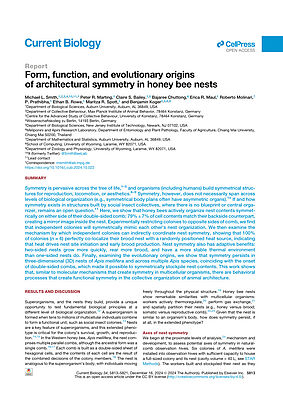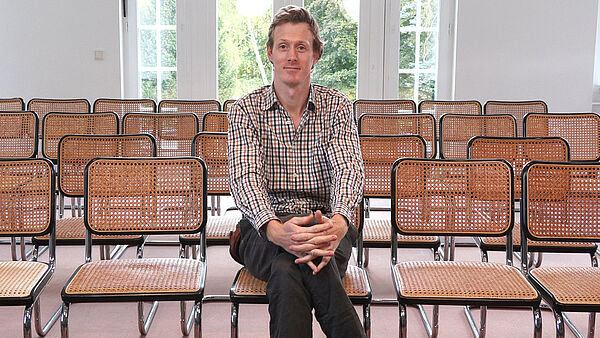
Michael L. Smith, Ph.D.
Assistant Professor of Biology
Auburn University
from September 2024 to February 2025
Born in 1987 in Dallas, Tex., USA
B.A. in Molecular Biology from Princeton University, Ph.D. in Neurobiology and Behavior from Cornell University
Fellowship
College for Life Sciences
Arbeitsvorhaben
Spatial Organization in the Superorganism Nest
Superorganisms, such as ants, bees, wasps, and termites, are a unique form of biological organization whereby multicellular organisms combine to form a functional unit (e.g., workers combine to form a colony). Superorganisms perform all the same biological imperatives – to survive, grow, and reproduce – but this often requires coordinating activities across hundreds, or even millions, of individuals. Therefore, social insects are an ideal system for understanding how evolution solves common organizational problems. One such problem is how to spatially organize resources within the nest.An organism’s appearance is the result of evolutionary pressures, and those same pressures apply to the structures organisms build, such as nests. Spatial organization is a common feature of life on earth, and just as unicellular, multicellular, and even ecological systems are spatially organized, so too are nests. For example, colonies often designate specific areas of the nest for storing food, rearing young, and producing reproductives. In the Western honey bee, Apis mellifera, there is a general pattern of nest organization: brood at the center of the nest, honey at the top, and a thin layer of pollen in-between. While there are many models for how bees organize their nests, the underlying empirical data are sparse, and previous work has not incorporated how nest organization changes throughout colony development.
Using data amassed over 10+ years, my time at the Wissenschaftskolleg will be spent exploring the spatial organization of the superorganism nest, to explore how nests are organized, how spatial patterns change over colony development, and how spatial models can inspire new experimental work. Broadly, this work offers a unique perspective into the evolutionary, developmental, and behavioral processes that underlie the organization of biological systems.
Recommended Reading
Smith, Michael L., Nils Napp, and Kirstin H. Petersen (2021). “Imperfect Comb Construction Reveals the Architectural Abilities of Honeybees.” Proceedings of the National Academy of Sciences 118 (31): e2103605118. https://doi.org/10.1073/pnas.2103605118.
Marting, Peter R., Benjamin Koger, and Michael L. Smith (2023). “Manipulating Nest Architecture Reveals Three-Dimensional Building Strategies and Colony Resilience in Honeybees.” Proceedings of the Royal Society B 290: 20222565. https://doi.org/10.1098/rspb.2022.2565.
Smith, Michael L., Kevin J. Loope, Bajaree Chuttong, Jana Dobelmann, James C. Makinson, Tatsuya Saga, Kirstin H. Petersen, and Nils Napp (2023). “Honey Bees and Social Wasps Reach Convergent Architectural Solutions to Nest-Building Problems.” PLOS Biology 21 (7): e3002211. https://doi.org/10.1371/journal.pbio.3002211.
Kolloquium, 05.11.2024
The Secret Things Honey Bees Do with Their Nest Architecture
Publikationen aus der Fellowbibliothek
Smith, Michael L. (Cambridge, MA, 2024)
Form, function, and evolutionary origins of architectural symmetry in honey bee nests
Smith, Michael L. (Cold Spring Habor, 2024)
Collective flow of circadian clock information in honeybee colonies
Smith, Michael L. (Amsterdam [u.a.], 2023)
Honey bee drones are synchronously hyperactive inside the nest
Smith, Michael L. (London, 2023)
How honeybees respond to heat stress from the individual to colony level
Smith, Michael L. (Cham (ZG), 2023)
Honey bees perform fine-scale detailing that continuously reduces comb area after nest expansion
Smith, Michael L. (Lawrence, KS, 2023)
Honey bees and social wasps reach convergent architectural solutions to nestbuilding problems
Smith, Michael L. (London, 2023)
Smith, Michael L. (Oxford, 2022)
Smith, Michael L. (Amsterdam, 2022)
Behavioral variation across the days and lives of honey bees

